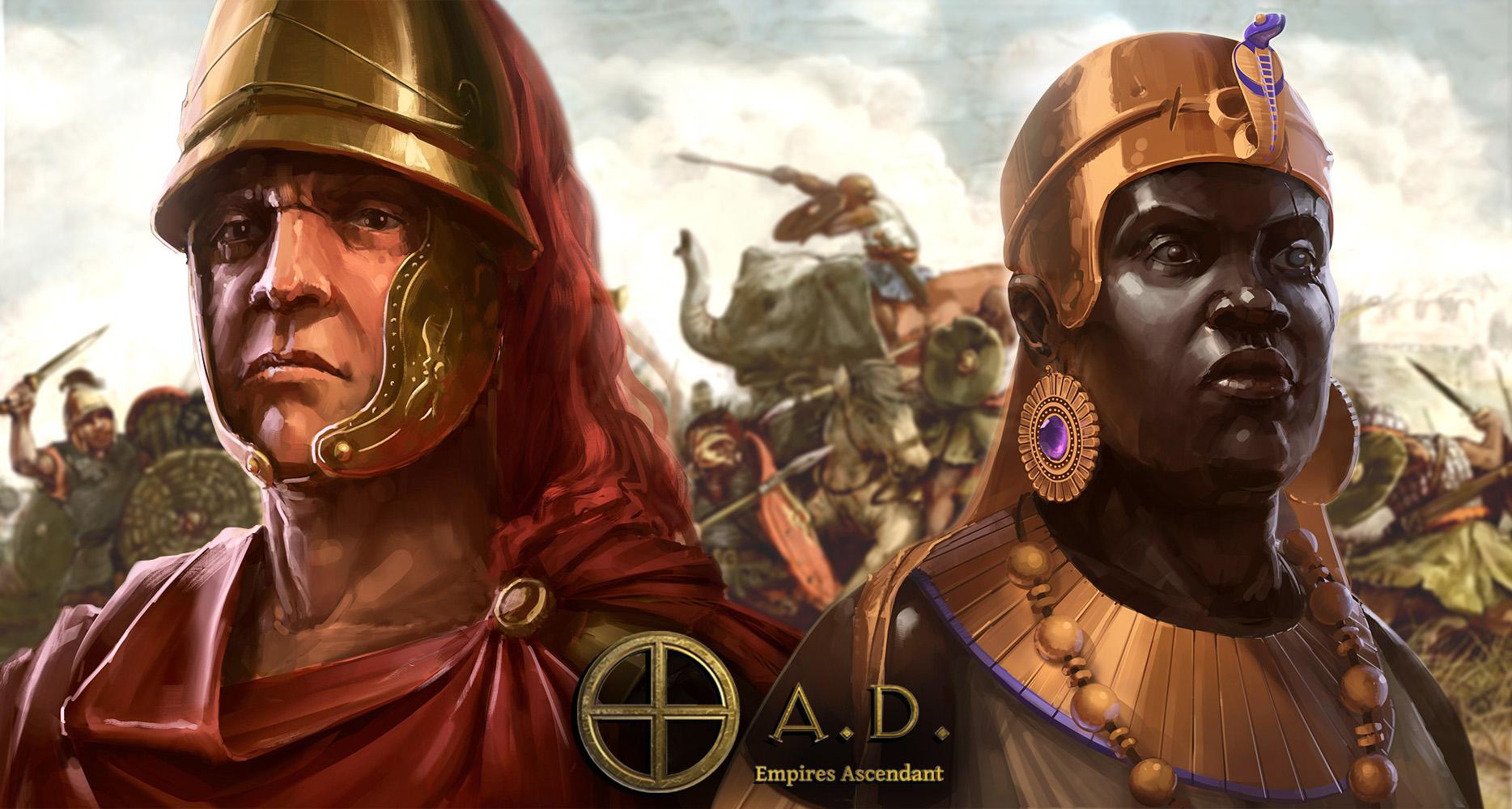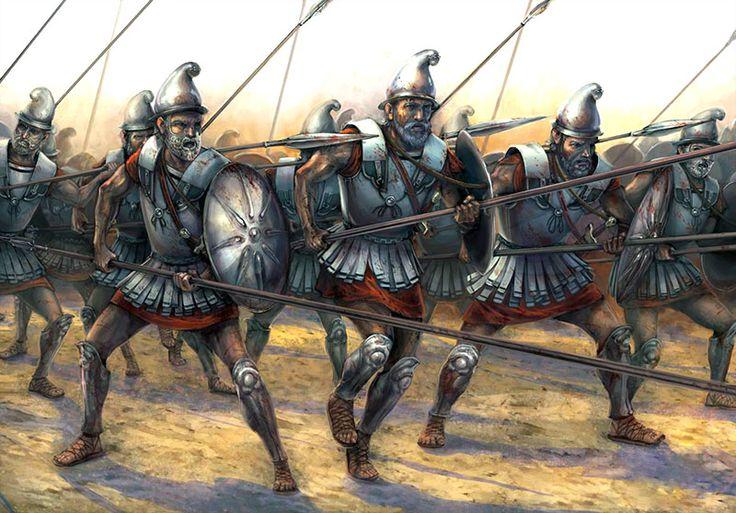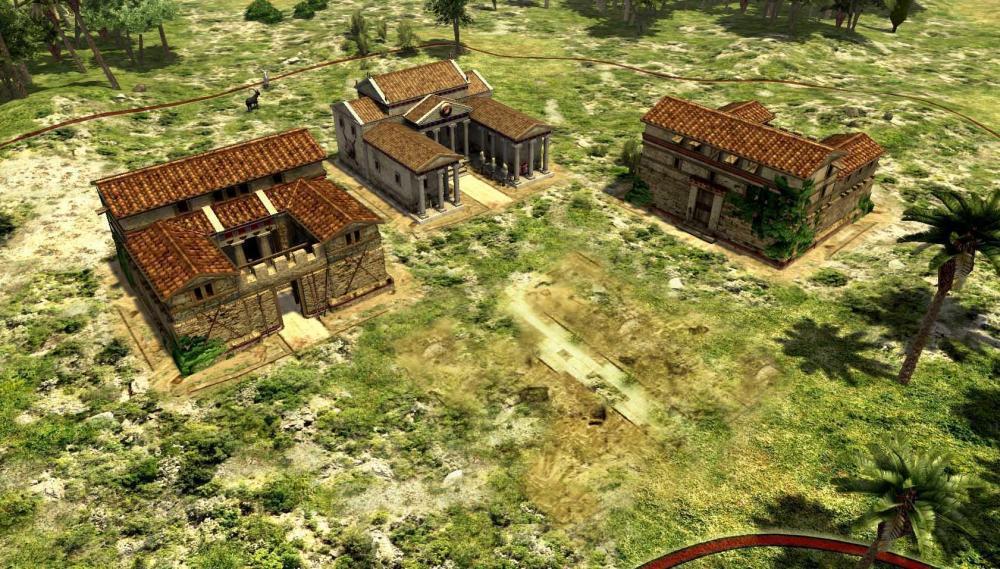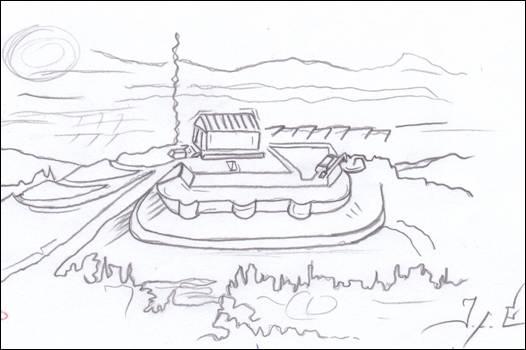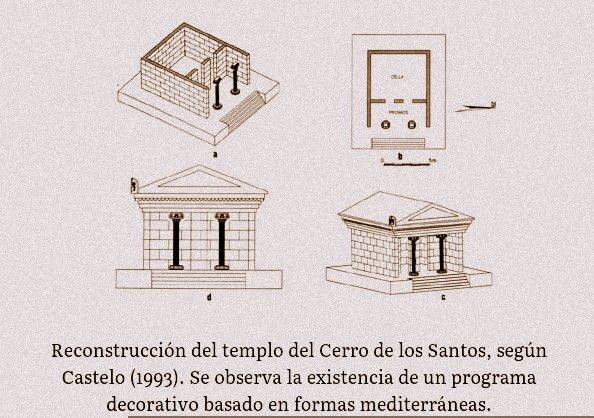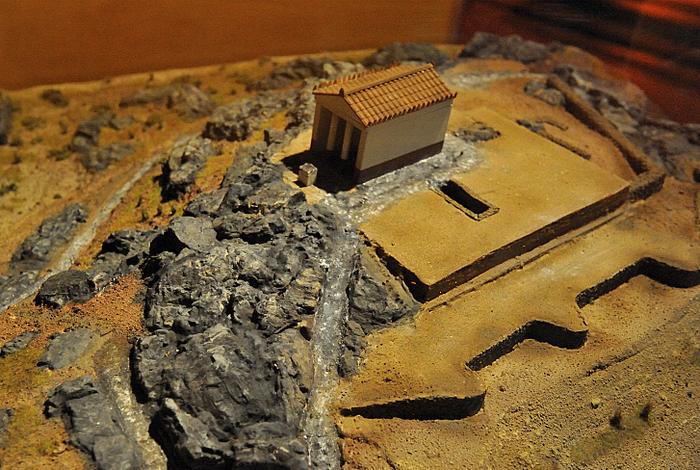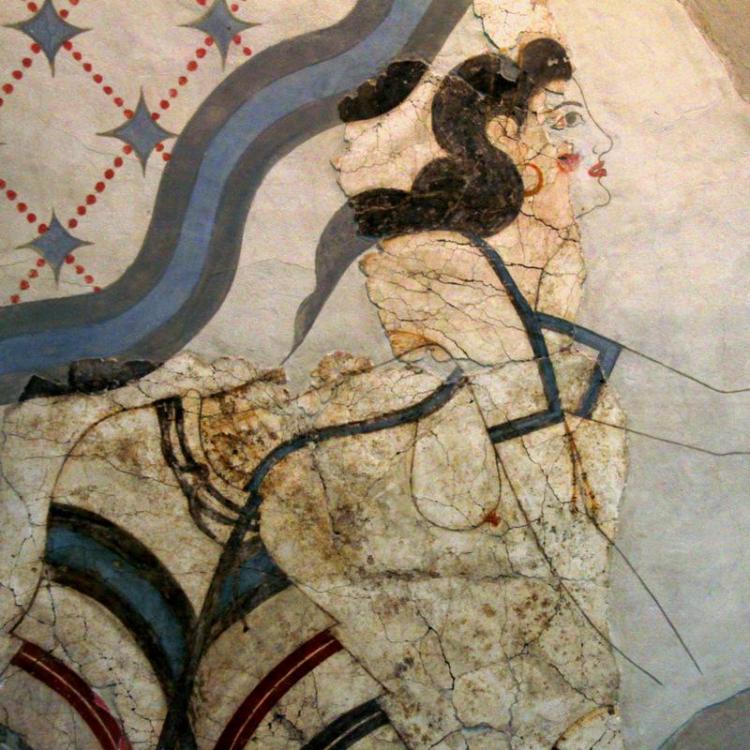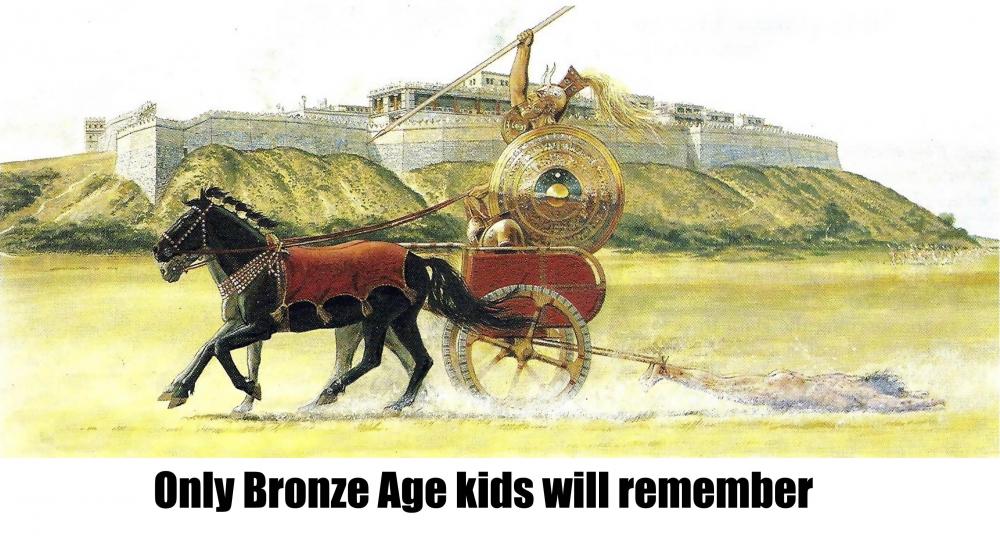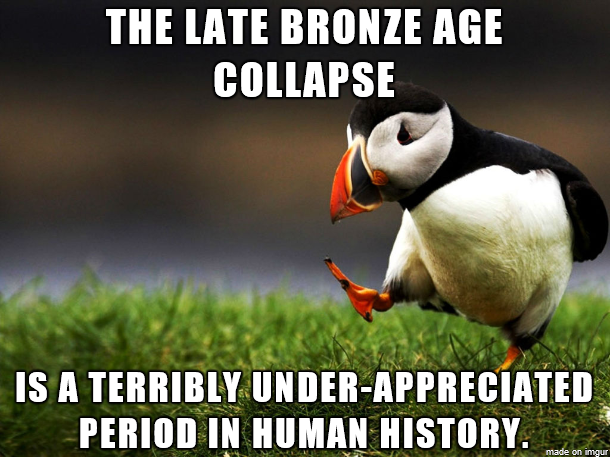-
Posts
2.332 -
Joined
-
Last visited
-
Days Won
60
Everything posted by Sundiata
-
I think the new head is waaay better, he just has an insanely thick neck which makes him look a little awkward. Fix the neck and it's awesome. Perhaps because the units are so small in-game, the features could be a little more pronounced: eyes/eyebrows, nose, lips... But not like the original dude-head, which looks a little like someone with down-syndrome.
-
I think it would be nice for each civ to have a specialized economic building to reflect the most important/iconic produce/export-item for each particular culture, and have this tied to an infinite coin trickle when "garrisoned", much like farming (farming coin). Think of Age of Empires III (e.g. bank, plantation). These economic buildings could be a pre-requisite for trade, or just provide a simple bonus. Coin would be used to pay mercenaries and bribes, research some techs and even build a wonder. The nuance in unit costs would be welcome, offers various strategies to play and win (economic finesse vs military domination), and the importance of the use of coin would depend on the civ (some civs are more mercantile than others). These specialized economic buildings could be things like plantations producing cash crops like cotton, or vineyards producing wine. The number of specialized economic structures you can build should be capped. Aside from coin, I love the idea behind the "glory" resource in Delenda Est, and would love to see it in vanilla, and have it tied to the morale of units. For vanilla, it could be called "Honour and Glory", and could be derived from building civ-specific statues and monuments, worshipping priests, battle-kills, size of territory, having lots of coin, and could be negatively affected by deaths (including "self-inflicted" cullings), loss of monuments, loss of territory, being broke, betraying allies... It could be a "percentage" (or a bar), and everything above 50% will increase the attack of all your units incrementally till it reaches (the very hard to reach) 100%. Anything under 50% would reduce attack incrementally till it reaches 0%, at which point your in-combat units are prompted to flee battle, and turn to gaia units, doomed to roam the map as stateless exiles...
-
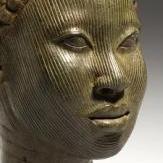
Hypaspists and armaments
Sundiata replied to Thorfinn the Shallow Minded's topic in Gameplay Discussion
Although I don't doubt that's true for the bulk of the phalanx, Hypaspists aren't even real phalangites, and I doubt that reasoning would apply to veteran/elite battalions like the Hypaspist that would be fighting in much more irregular/dynamic formations on the flanks. These guys could afford more than just a pilos helmet, and the general nature of their combat roles argues against the idea of anyone choosing to leave their armor behind during battle. I get the idea that these guys were kind of like the navy SEALs of their day, well trained and well equipped. Equipment would depend on the mission, but in frontline combat, no one's leaving behind the flak jacket and ballistic helmet... That would be delicious though, but also depends on the specific unit, not universal, or as you say "not defined harshly". This is a bit like the nature vs nurture debate. I think it's both. A combination of armaments, training, and their historical deployment (actual combat experience) are all deciding factors here. What would be considered light in one culture could be considered heavy in another and vice versa. -

Hypaspists and armaments
Sundiata replied to Thorfinn the Shallow Minded's topic in Gameplay Discussion
I think you're all kind of right on this topic, but I think the question is wether the current look of the Hypaspist is "appropriate" for such a versatile unit. The muscle cuirasses just seem a little "heavy". These Argyraspides (originally named Hypaspist) seem to be right on the money for Alexander's timeframe (I'm no expert though) Essentially very similar/the same as the "Seleucid Silver Shield Pikemen", before the actual establishment of the Seleucid Empire. (There should be overlap between the Macedonians and the Seleucids anyway, and the Hypaspist/Argyraspides offers this sublimely historical overlap). -

Wow's and Wow Jr.'s Awesome Gameplay Wishes
Sundiata replied to wowgetoffyourcellphone's topic in Gameplay Discussion
For me, everything prior to and including March is marked as unread, and some new topics are sometimes marked as read without having read them... -
I think as long as you just use a neutral "dirt" texture like the one shown, it's almost always going to look better by default Or for each "group" of civs, like Greco-Roman, African/Middle-Eastern, "Barbarian" and Oriental".
-
@LordGood, you know I'm your biggest fan, right?! Wouldn't it be nice to have a "faded" version of these decals remain after the structure is destroyed (for a considerable time after the rubble has disappeared, unless overbuilt)? Like a faint ruin, leaving an impression on the terrain where buildings once stood. It's one of my big wishes, to be able to see the remains of once thriving towns in the wake of an enemy army passing through. It's also nice to be able to make out where an enemy settlement once stood, even if that enemy was wiped out before you passed through their former land. Call them ghosts of the past..
-
Wow!
-

Iberians Culture / Cultura Íberia
Sundiata replied to Keinmy's topic in Tutorials, references and art help
Haha, yes indeed... DE is pretty awesome in many regards.. That's why some of the campaigns or scenario's could start in different phases, or even have custom versions of the civs specific to that campaign (specific units). Anyway, I just really like to see visual differentiation between the phases and individually upgrading CC's. "Soft"-linking historical evolutions to the phases seemed like a nice idea, but not necessary. Doesn't seem to be a popular idea anyway... lol... Might still bring it up from time to time though -

Iberians Culture / Cultura Íberia
Sundiata replied to Keinmy's topic in Tutorials, references and art help
Oh, sorry, I misinterpreted... Still seems about as much work as my suggestion though, and a little bit awkward maybe. I just like 1 people be 1 people, and not be split up over time, but rather evolve. I guess I just don't like the idea of having more than 1 faction of the same people from the same geographic area in-game, when other factions are totally absent from the game (imagine 2 Roman factions and not even 1 Chinese faction in vanilla). I guess it's just a matter of personal preference though. -

Iberians Culture / Cultura Íberia
Sundiata replied to Keinmy's topic in Tutorials, references and art help
I also think this will actually end up being A LOT more work than simply having a more comprehensive part 1... I honestly think deferring stuff to a mythical part 2 undermines the true potential for part 1. -

Iberians Culture / Cultura Íberia
Sundiata replied to Keinmy's topic in Tutorials, references and art help
Meh... Age of Empires literally goes from Stone Age to Iron Age (4000 years at least). I'm proposing to go from Early Iron Age Antiquity to late Iron Age Antiquity, about a 1000 years total, but it would be different for each civ. Rome wasn't built in a day. Conquering an empire usually takes a few centuries. Developing a culture capable of conquering and maintaining an empire even longer. The longer timespan ensures satisfying overlap between civilizations and major events and provides more flexibility in terms of campaigns (which could be limited to a certain phase) as well as references. I'm pretty sure that's not even remotely the case now... And I don't see a problem with that. Representing only a point in time is incredibly limiting, and impossible to get right for most civs. It removes most overlap and makes campaigns historically inaccurate, almost by definition. Most civs didn't meet at their strongest, but when one or the other was weakened (Roman conquest of Greece for example). A general evolution (rise and fall), broadens usable references and reduces the potential for criticism on historical accuracy, by simple virtue of having a broader timeframe. The game is called "Empires Ascendant" not "Empires Stagnate" Anyway, I do think that the phases should represent village, town and city phase primarily. The evolution over time is more of a "soft feature", depending from civ to civ and could be nuanced in some and substantial in others, where appropriate. It just adds a lot of immersion and variety and possibilities. -

Iberians Culture / Cultura Íberia
Sundiata replied to Keinmy's topic in Tutorials, references and art help
Don't worry, we can't agree on everything I'm a dreamer, I know, but that's what I would actually really like to see. Researching the "Imperial Phase" for the Romans would result in a total overhaul of the structures and units (including the already recruited ones). A visual evolution in the basic structures like houses and CC through the phases is what I'd actually like to see for all civ's. The less impressive forms of the CC's would be for the earlier phases, the impressive ones for the latter. It would add some epicness to phasing up (visual reward/emotional attachment). Only houses and CC's would really need to go through this evolution, because most other structures only become available in later phases anyway, and buildings like farmstead and dropsites are rural buildings that don't need to "evolve". So only houses and CC's evolve: 3 levels of houses, from village to city, 3 levels of CC, from simple gathering place to ornate palatial/government structure), maybe 2 levels of barracks. In some cases, this evolution could be as "simple" as going from thatched roofs to wooden shingles (Gauls) or ceramic roof-tiles (Greco-Romans). CC going from 2 stories to 3 stories (Romans/Kushites). Props like removal/addition of statues could help distinguishing early, mid and late CC's. Simple vs ornate textures, etc... This mechanic would truly come into its own if CC's need to be phased up individually, so you could end up 1 city, a town or two and a few villages, for example. Some phase benefits would be tied to the individual CC (what buildings can be built where), but other phase benefits would be across all CC's like which units can be recruited (except champions, perhaps). These general benefits would also be lost when loosing you're city. It wouldn't be more awkward than having two different Roman factions. How can you have two factions based on the same capital city? I'm also "wincing" at the idea of republican Romans fighting against Imperial Romans in the same match (both going through the same three phases). Romans are one civilization, divided into several periods (like many others), so using those periods to differentiate the different phases seems like a far more logical option. I mean, they're the "bloody" Romans... They should feel more substantial/Imperial than any other faction. -

Iberians Culture / Cultura Íberia
Sundiata replied to Keinmy's topic in Tutorials, references and art help
Indeed, those mechanics would be well suited for the "Barbarian" factions. I'm in favor of a 4th phase, the Imperial Phase, but only for imperial civilizations. Gauls, Britons, Iberians and Thracians could have a regional/tribal specialization instead of the Imperial Phase. I'm also in favor of more substantial differences between civs based on their cultural specifics. There is sooo much to work with. People are just scared of what it would do to the balance of the game, which would be challenging indeed, but well worth it in my opinion. Scythians are also pretty high up on my list They provide a Western counterpart to the Xiongnu and the nomadic element would be a really refreshing feature in a classic RTS-game like 0AD. True, but it's still a lot easier than pretty much any other faction, except for the Athenians, perhaps. With a 4th Imperial phase, we could "legitimize" the imperial era buildings, and open the door for the most iconic Roman monuments like the Colosseum or the later stone-built Circus Maximus. Romans could actually use an update, as @Lion.Kanzen indicated. -

Iberians Culture / Cultura Íberia
Sundiata replied to Keinmy's topic in Tutorials, references and art help
It's not like saying "Hellenes and Romans were equal", it's more like using Samnite and Etruscan references to fill the gaps in the Roman faction if we didn't have enough primary references to work with. In the case of the Romans, we don't need to do that because there is a ton of high quality information and primary references available on them. There is not nearly as much information available on the Iberians (just a fraction, actually)... Hence the need to the get a bit creative. Of course, the faction can and should continually improve over time, but replacing Euskera with Catalan is not an improvement, at all... Looking for the most archaic forms of Basque words, and mixing in the few Iberian words we can find would be much more of an improvement. The fact that Catalan speakers today occupy ancient Iberian areas is a very poor justification for using the Catalan language to represent the Pre-Roman peoples that lived there 2000+ years ago... There is an actual (even if it's a faint) relationship between the Aquitanian (and by extension Basque) and Iberian languages. There is none with the Catalan language... Exactly! Or English for the Britons, or Arabic for the Kushites, Ptolemies, Seleucids and Carthaginians... That's actually a useful reference. And a different sanctuary: They look more like temples than wonders though... By the way, technically I wouldn't have a real problem with "Iberianizing" the Iberians, BUT, that would mean cutting out Celt-Iberian stuff (say goodby to the references from Numantia), Lusitanian stuff like Viriathus, the Tartessian elements like the Cancho Roano, as well as the temple, which would need to be replaced with a Mediterranean type temple (even more Greek looking stuff...) It would end up reducing a beautifully unique faction representative of the entire Iberian peninsula, to a much more limited, even generic looking faction. If we add your unpopular language suggestion we'd basically end up with a Catalan nationalist faction. 21st century politics is not really what 0AD is about. According to this logic, we'd also have to split the Gauls into their respective tribes as well as the Britons, and for the sake of representation, Celt-Iberians, Lusitanians and Tartessians would also need to be independently developed. It would be more accurate, yes, but not feasible in terms of references and man-power. You'd end up with like 10 half-done factions, because there isn't enough reference material to create complete and historically accurate factions, which would be the (self-defeating) point, wouldn't it? -
So... Can we agree on this? I believe, if not, the ones that don't agree should try to formulate one or two new options for a more "objective" poll, and urge everyone to vote on it. I think the results of the original poll were quite telling though... I actually tried googling that...
-

Iberians Culture / Cultura Íberia
Sundiata replied to Keinmy's topic in Tutorials, references and art help
I think the first thing to note, is that the term "Iberian" also has a wider meaning, referring to all the populations of the Iberian peninsula, since ancient ancient times (because Romans and Greeks first encountered ethnic Iberians in Eastern Spain, they applied that name to the entire peninsula as well). Of course this isn't the most precise terminology, but much of pre-Roman Iberian history is somewhat obscure, and at the time that this faction was designed, not enough information on any one ancient population of the Iberian peninsula was available to create a complete faction, so the "Iberian" faction became a sort of amalgamation of different tribes and cultures of the Iberian Peninsula of that time (not that different from the way the Gauls and Britons were designed). More specific quality information on Iberian material culture, art, architecture and military will always be received with open arms! but, Has me a little worried... Catalan is not generally considered more linked to Ancient Iberian than Basque. How would a medieval romance language be more suitable than an ancient pre-Roman, possibly even pre-Indo-European language? Since ancient Iberian is extinct and nobody speaks or even understands it, the choice for "the vascon or euskera" language seems far more appropriate, because it's the most ancient, and in all probability more closely related to ancient Iberian than any other language known and understood today. -
I think the problem is more that a mass of units automatically target the nearest enemy unit, instead of spreading their attack over a "front", targeting not only the nearest enemy unit, but also every other enemy within a certain radius of it. If that were possible, dancing units won't be a viable tactic anymore. Automatically reassigning units to the nearest target every couple of seconds could also mitigate the dancing unit tactic, as simply pressing the "halt" button regularly during battle greatly increases the effectiveness of your soldiers as they stop chasing people across the battlefield while taking hits and doing no damage in the process.
-
@elexis, may I invite you to check out the following posts with specifics about Gallic architecture including a bunch of relatively accurate artists' representations of oppida (except the parisii one, which is apparently a bit of a fraudulent imagination) ditches are a definite yes. Even several circles of ditches was a thing. Perhaps with pikes. Wether they had water in them or not, I can't say. Probably mostly not, seen as they were usually built on an elevation. Fortified gateways similar to the one you made can be found at Manching and Bibracte, although there's usually only one gate-house, set back, with the walls extending in front of it, but not as far. Gauls definitely built bridges (Vercingetorix breaking up bridges to slow the advance of Caesar). Not sure what they looked like though... Wood, probably. Celts apparently used wooden planks for some of their roads. Some of the oppida, like Entrement had paved roads of stone (irregular shaped stones). There was a lot of variety in oppida and level of sophistication. The more "advanced" ones definitely had an urban/proto-urban character. The oppidum of San Cabran (Celtic Castro Culture, Iberia) had both stone paved roads and a radially symmetric shape and a central walled "acropolis". It also had cute little stone round huts. Oppida were indeed usually built on top of a hill.. Not exclusively, but the more substantial ones mostly were. I love the map so far, and I'm curious to see where you take it... Good Luck and Vim! .
-
Saying that Parthia is a Hellenistic state is misleading. They conquered a Hellenistic Empire where Greek language and culture was wide-spread (but not at all universal), yes, but the Parthians were Iranians and were responsible for the Iranian Revival, which is very significant. Sure the early rulers described themselves as philhellenes, but they were Iranian, very similar to Persians, and looked distinctly Middle Eastern in most respects. I'm very excited about Zapotecs, and other pre-Columbian civs ! They're just their own kind of thing, so they don't integrate well with the other vanilla-civs (geography, stone vs iron, no horses or powerful navy), so they should be a stand-alone expansion. I'd love to play it a lot though It's pretty obvious why Sparta and Athens are stand alone civs. No need to argue about that. I get a bit tired of Hellenocentrism, but I'm not totally opposed to other Greek civs, only if more non-Greek civs are added as well. But the focus should really be on the more important civs across Afro-Eurasia in my opinion. Who said we should go into the Bronze Age for part 1? I think everybody agrees to keep it purely Iron Age... The question is should we cut Iron-Age Antiquity in half and throw away the beginning and end of it, as if they are some sort of unwanted appendages? They obviously don't belong in the Bronze Age or the Medieval Age either. Those few Iron Age centuries before and after 0AD's current time-frame are just too silly to represent in their own 2 mods. From c. 8th century BC to 5th century AD is all Iron Age Antiquity (across the Old world) and forms a cultural, technological and to a degree even political continuum (in general terms of course)... Bronze Age is for the prequel, indeed. Yes! If you want a specific date like March 15, 44 BC, then yes, it would always be totally arbitrary. But defining a specific date like that for game with such diversity in civs is nonsensical in my opinion to begin with. That's my whole point! That's why I advocate following actual historical periods, which are important across the Old World, and have varying specific dates depending on the geography you're discussing. Major historical periods are absolutely not arbitrary, and are not defined by the death of a single individual in a single civilization. Bronze Age Antiquity, Iron Age Antiquity and the Medieval Period are the three periods that make sense for a game like this. Don't define specific dates for the cut off points. Only use the general period. Anything else is going to be unnecessarily awkward. Create some leeway for yourself. It will help with the historicity of the game to be able to portray the rise and fall of the majority of civilizations, rather than cut most civs in half, because, reasons... Also, the arbitrary 500 year increments for the different parts of 0AD not only put considerable and awkward restraints on referencing, they could easily result in 6 different games (1500 BC - 1500 AD), meanwhile the development team is struggling with part 1. The 3 periods: Bronze Age Antiquity, Iron Age Antiquity and the Medieval Period are far more feasible and way easier in terms of referencing. Yes, yes, yes... Exactly... Those are "Barbarian" civs. There's an obvious difference. They never established empires... I don't think anybody wants that... Spartans and Athenians are super-duper iconic... And there's lots of research on them, so referencing is a breeze. Further differentiating Gallic factions seems like a referencing nightmare! Also, what's the point of developing 8 new factions, all of which are exceedingly similar to each-other while work on other world-powers like Scythians hasn't even begun yet?
-
-
0AD's timeframe doesn't make any sense and cuts straight through major historical periods with no regard for anything but the birth of Christ, which is really weird for a historical game. Kingdom of Pontus (281 BC - 62 AD) is totally relevant to the current timeframe Parthian Empire (247 BC - 224 AD) is totally relevant for the current timeframe, but is one of many who's history is cut in half by the whole 500BC-1BC dogma. As Nescio said, they really belong in "Part 1" though. Sabaeans are super interesting (brilliant architecture) and relevant (war with Rome, incense, myrrh and spice-trade) and often overlooked. Nabataeans are also very interesting and relevant (architecture, politics, military) Going earlier, we could have the Iron Age Neo-Assyrian Empire (911BC - 609 BC, and Assyrians continued being militarily relevant until the Seleucids, rebelling against Achaemenid rule several times). Scythians... Let's not forget Scythians... They're super important, no matter what... And link the Eurasian steppe, opens the door to the Chinese and Xiongnu Greco-Bactrian Kingdoms are interesting (actual interplay with China, lots of interplay with India) Going earlier we could also have other relevant civs like Etruscans and late-period Egyptians. Extending the timeframe a little later (until the crisis of the 3d century, or even the sack of Rome), we could have Imperial Romans as a special 4th phase. Germanics. Axumites. Kushans, Tamils. Garamantes, Numidians and Thracians are also nice to have. I'd say forget about the mythical "Part 2" and develop Millennium AD as the new official "part 2", from c. 455 AD to 1492 AD: 0 A.D. Medieval Empires Ascendant Let "Part 1" be complete. Let it depict Iron Age Antiquity from the founding of Rome to the Vandal sack of Rome: 753 BC - 455 AD. "Part 3" could be Bronze Age (Aristeia). Ancient Egyptians, Babylonians, Hittites, Minoans, Mycenaeans etc...
-
Karma is a female dog.
-
Hmmm, that's a design flaw in the game that should be addressed in my opinion. Uhu... This is very true... People often forget that we, humans, are the apex predator. Every other animal fears us, including big predators. Man-eaters are exceedingly rare. Those tigers in the Sunderbans drink brackish water which might cause them to be a little insane... "Humans will always choose what they understand over what they do not. [...] The only animals left in this world are the ones who they subjugated, who curl at their feet, or those who learn to flee at the very sound of their approach. There’s nothing in between." - Ford, from Westworld But wild animals attacking is a fun gameplay feature, and isn't totally unrealistic (tigers of the Sunderbans, the Lions of Tsavo, rampaging elephants, A moose in heat, a macaque throwing feces...) I don't think it should be possible to put women in formation, because, you know, they're women... Only female military units should have formation options imo. ? !
-
Exactly That feels much more intuitive Isn't there a difference between vision range and the range at which a unit decides to attack? Wouldn't reducing attack range in general be a good idea to stop random berserking behavior. I'm personally not in favor of reducing vision ranges as you sometimes don't even see what you're being attacked by as it stands, which is a little bit ridiculous. Units just flying off individually to attack anything that comes within vision range is horrible. Stances are nice to have, but is a bit tedious to keep an eye on. It's a good way of loosing an entire army if not paying close attention (which is often the case when fighting on multiple fronts). I think that everybody that voted in the poll had the faculties to understand it was "mostly facetious anyway", and they still voted (nobody was coerced, to my knowledge), which shows that it's something that's relatable for most, and they'd like to see it changed. At least that's my interpretation.

